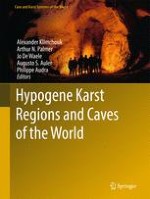2017 | OriginalPaper | Buchkapitel
52. Sistema Zacatón: Volcanically Controlled Hypogenic Karst, Tamaulipas, Mexico
verfasst von : Marcus Gary
Erschienen in: Hypogene Karst Regions and Caves of the World
Aktivieren Sie unsere intelligente Suche, um passende Fachinhalte oder Patente zu finden.
Wählen Sie Textabschnitte aus um mit Künstlicher Intelligenz passenden Patente zu finden. powered by
Markieren Sie Textabschnitte, um KI-gestützt weitere passende Inhalte zu finden. powered by
